The Evolution Revolution of Surf Parks and Surf Pool Technology According To URBNSURF’s Andrew Ross.

On the eve of firing up URBNSURF’s first surf park in Melbourne, Australia, Founder and Executive Director Andrew Ross gives his perspective on evolving surf park technology: where it’s been, where it’s at now, and where it’s headed:
“The first generation of wave pool technology is the ‘pump-and-dump’ systems which we’ve seen at Typhoon Lagoon at Disney, Siam Park in Tenerife, all those places. And the best iteration of it is Wadi Adventure in The Emirates. That technology was developed back in the mid-’70s and sort of has lasted all the way through. It doesn’t really create a true ocean-based wave. It’s got low frequency waves and low capacity, and it’s very expensive to develop as it requires a full concrete shell. That type of technology was designed to create an ocean-like experience for bathers, not really to create a surfing wave for surfers.”
“The second-generation surf park technology is the wavefoil. That’s Wavegarden’s version, and Kelly’s version, which I guess is the pinnacle of that generation of technology. A better wave, a slightly higher frequency, a much longer wave in the case of Kelly’s, and it was really good because one of the main limitations of the ‘pump-and-dump’ is that all of the energy which generates a wave is only there at the point of release where the water comes out of the chambers behind the wall, and as the wave propagates away from the wall, you’re basically losing energy in the wave at an exponential rate. So, once you’re about 10 or 15 meters away from the wall, your wave’s about half the size compared to the point at which it was generated, and then once you’re another ten meters away, its half that size again. Whereas with wavefoil technology, the foils actually imparts energy into the wave for the whole length of the ride, so you’ve got the same height, shape, speed, and power for the length of the ride, which is great.”

“But the a limitation with wavefoil technology is that the wave it creates doesn’t really have a trough, and it’s also a convex shape that you’re surfing on, very much like how a boat wake bends back behind a boat. If you put your hand in front of your face and bend your fingers down a little bit, kind of dome-like, that’s the surface you’re surfing on – on the top of the dome. If you’ve surfed at Snowdonia or NLand you’ve probably sensed that, it’s like the wave’s trying to push you off the wave back into the white water, and if you go too far over onto the shoulder, you get out of the power pocket and you kind of come off the back of the wave. The power in the wave is always in the top half only. There’s no trough at the bottom that you can turn off, and you’re surfing on this sort of domed, convex surface. So, there’s some limitations there. I think the main limitation for me with that technology looking back on it, is that you’ve got one massive wavefoil, on one massive rail, deployed by one massive cable, through one massive electric motor. If any of those elements break, then you’re down, you’re draining your lagoon, and you’re out of action – potentially for months. We’ve seen this in the past at Snowdonia and NLand. I think Kelly’s had a few issues as well, but because he’s not open to the public we’re not really aware of it. For me, the wave quality, frequency, capacity, and the potential for catastrophic breakdowns all weighed against that technology choice, and the business model associated with it.”
“The third generation of surf park technology is what I call ‘modular-based systems’, and those include the ‘Cove’ and American Wave Machines’ ‘Perfect Swell’, which has been proven at the BSR Surf Park in Waco, Texas. The ‘Cove’ uses an electro-mechanical system of modules to generate waves, which are all individually controlled, whereas the ‘Perfect Swell’ is pneumatic, using air-compressed chambers that push water out into the lagoon in a sequential basis. Both allow you some freedom to generate waves, which are of a different shape, height, speed, and peel angle just by triggering these different modules in different sequences. You’re imparting power into the wave as it flows along adjacent to the modules, and you’ve got a much, much higher frequency of waves, a better wave (which is concave shaped, rather than convex with a trough at the bottom), and far more capacity – all good things.”
“The big advantage from an operator’s perspective with the ‘Cove’ modular system is that you can have a number of modules fail on you all at once, and you can still generate waves. It’s very simple to replace the motors – you can do it overnight, with no need to drain the lagoon. The ‘Cove’ has a huge amount of sensors where we can actually map out ‘the temperature of that particular motor is three degrees higher than it has been against its long term average, we think it might need servicing in six months’ time, so that let’s us keep an eye out for it and assists with our preventative maintenance programme’.”
“What do I think the fourth generation of wave generating technology will be? The ‘Cove’ can already produce 1,000 head-high waves an hour. From a commercial operating perspective that’s actually too many waves to safely push through for a full lagoon of guests. The wave’s two meters high, which is good, but I don’t think we’ve really seen the full extent of what the ‘Cove’ can do yet. In the Basque Country you’ve only got a fraction of a second where the wave is at full height, and then it starts to diminish in size. With our system at URBNSURF Melbourne, given we’ve got double the number of pistons, we should have somewhere in the order of about eight seconds at full height before it then starts diminishing, and then have another eight seconds or so as it drops off.”
“In terms of length of ride, Kelly’s the longest with a 45-second plus long ride, but after talking to normal surfers who’ve surfed his lagoon, and even some of the pros, everyone’s stuffed after the first half, and they’ve gotta sort of half stand up on their boards, gather their breath, release the lactic acid, and then kind of go again. You could see that in the recent contests that’ve been held there. I think the decision the Wavegarden guys have taken is probably the right one, where you make the wave half as long as Kelly’s, but you surf it at 100% effort for the full length, say 16-18 seconds. Then you recover on your paddle back to the takeoff point, and then go again at 100% effort. Rather than having a few waves that are double the length, we’d prefer half the length, but triple the amount of rides, or even more. Quality and quantity.”
“I think the next generation of technology is going to be all about how can we make waves bigger. There’s a relationship between the amount of power that’s required to generate a wave of a certain height. By adding a half-meter to a wave, it’s not the height of the wave that you’re increasing, it’s the base of the wave to get the height, which increases the total volume of water by a factor. Power requirements therefore increase exponentially to get that extra half-meter of height. The volume of water that you have to shift has direct implications on the wave generating equipment that you need, how big that needs to be sized, the power that it uses, and so on. The ‘Cove’ can theoretically produce waves up to three, three-and-a-half, or even four meters in height probably, but I don’t think anyone would be able to afford a session, because of the power costs, the cost of the capital equipment to deliver waves of that height, and the fact you’d need an enormous lagoon. But who knows, maybe we could make it work as part of a resort concept somewhere in the world.”

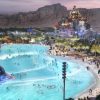
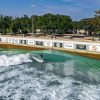
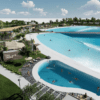
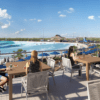
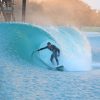

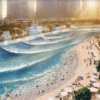
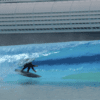
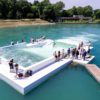


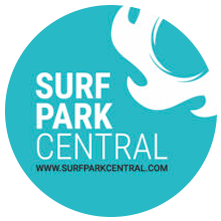


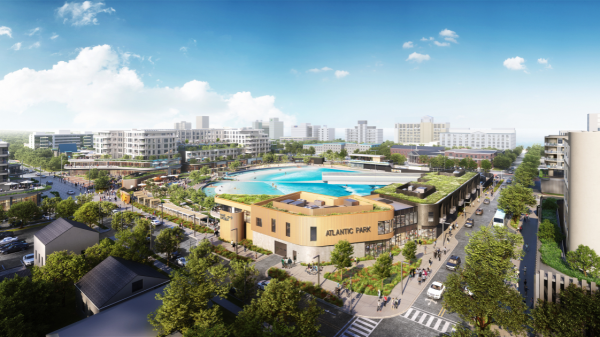

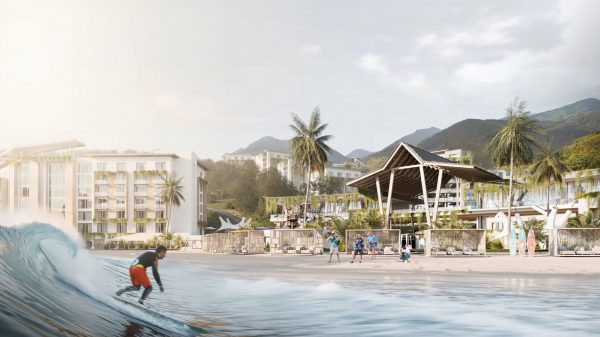
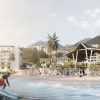
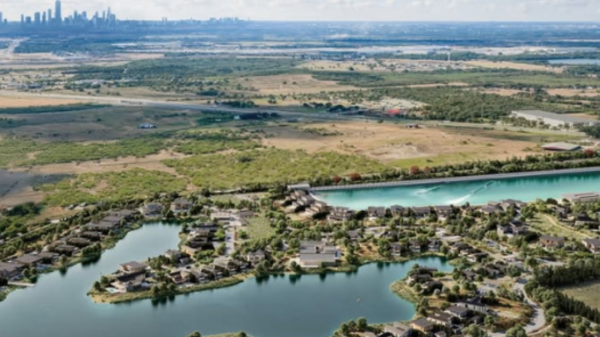
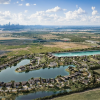
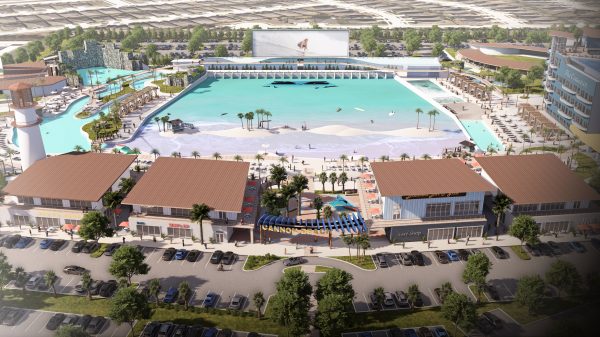
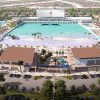
You must be logged in to post a comment Login